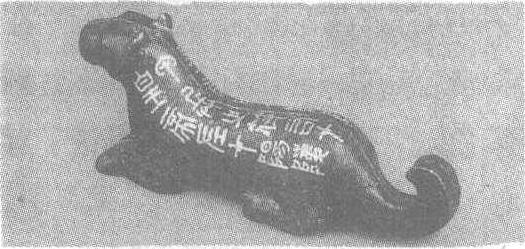错金“阳陵”铜虎符
秦。通高3.14厘米,通长8.9厘米。传山东省临城出土。北京中国历史博物馆藏。此器呈伏虎形,昂首目视前方,长尾曲翘。虎颈背左右各有错金篆书铭文两行12字:“甲兵之符,右才(在)皇帝,左才(在)阳陵。”左右已锈固,不能分开。为秦始皇统一全国后颁发给驻守阳陵将领的兵符。皇帝发兵,将领必待合符后方始行动。

| 词条 | 错金“阳陵”铜虎符 |
| 类别 | 中文百科知识 |
| 释义 | 错金“阳陵”铜虎符秦。通高3.14厘米,通长8.9厘米。传山东省临城出土。北京中国历史博物馆藏。此器呈伏虎形,昂首目视前方,长尾曲翘。虎颈背左右各有错金篆书铭文两行12字:“甲兵之符,右才(在)皇帝,左才(在)阳陵。”左右已锈固,不能分开。为秦始皇统一全国后颁发给驻守阳陵将领的兵符。皇帝发兵,将领必待合符后方始行动。
|
| 随便看 |
开放百科全书收录579518条英语、德语、日语等多语种百科知识,基本涵盖了大多数领域的百科知识,是一部内容自由、开放的电子版国际百科全书。